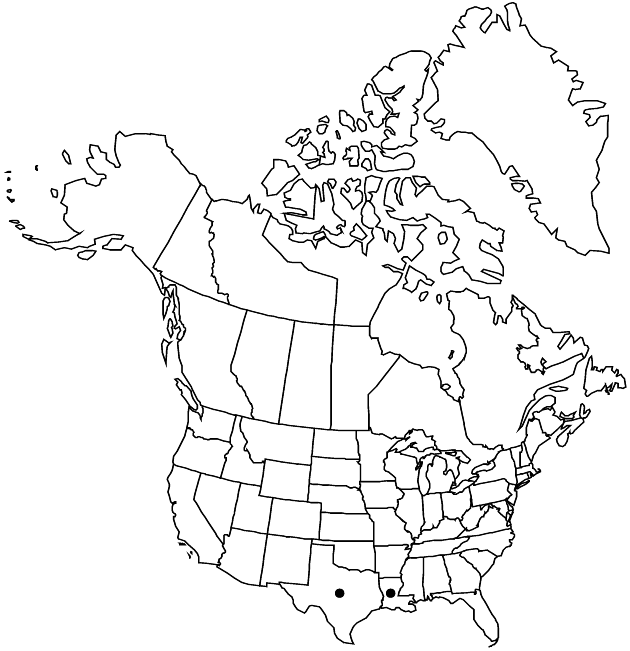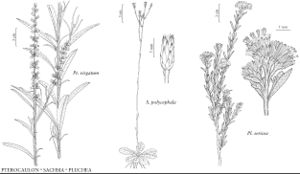Difference between revisions of "Pterocaulon virgatum"
in A. P. de Candolle and A. L. P. P. de Candolle, Prodr. 5: 454. 1836.
Common names: Wand blackroot
Basionym: Gnaphalium virgatum Linnaeus Syst. Nat. ed. 10, 2: 1211. 1759
FNA>Volume Importer |
FNA>Volume Importer |
(No difference)
| |
Revision as of 19:38, 24 September 2019
Plants 4–15 dm. Leaf blades linear to narrowly elliptic or linear-lanceolate, 5–10(–15) cm × (2–)5–10(–14) mm, lengths mostly 6–8 times widths, margins entire or minutely denticulate (revolute). Heads in open, interrupted, ± cylindric arrays (5–)8–20 cm (main axes visible between glomerules of heads). Involucres campanulate to cylindric, 4–5 mm. Pistillate florets 25–50. Functionally staminate florets 2–4(–5). Cypselae 1–1.4 mm.
Phenology: Flowering Aug–Oct.
Habitat: Marshy areas, ditches, moist places in woods, in sand, sandy loam, and sandy clay
Elevation: 0–20 m
Distribution

La., Tex., Mexico (Tamaulipas), West Indies, Central America, South America.
Discussion
Selected References
None.
Lower Taxa
None.
